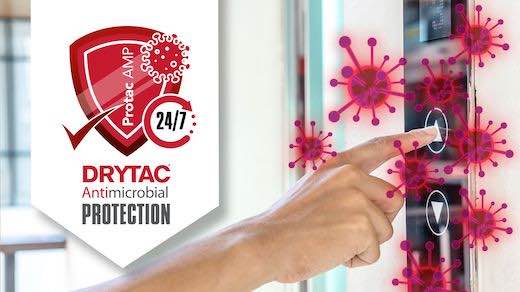Not All Antimicrobial Coatings and Products Are Created Equal
Press release from the issuing company
The pandemic has led to a rise in the use of anti-bacterial and antimicrobial products. However, users need to choose carefully in order to achieve maximum protection.
Authored by Shaun Holdom, Global Product Manager at Drytac.
Bristol, UK – The global pandemic has changed our world and society in significant ways. COVID-19 has drastically changed our perception of hygiene and cleanliness, spurring the development of films and coatings with antimicrobial performance.
Previously, these coatings and products struggled to find widespread adoption due to difficulties in qualifying their effectiveness on human health and justifying any additional costs. However, the pandemic has drawn attention to measures that can provide additional protection and reassurance to the general public and this has created a new need for antimicrobial surface protection.
It should be noted, however, not all antimicrobial coatings and products are created equal. Some are only effective against bacteria (antibacterial) while some are effective against a wider range of microbes - such as algae and fungus - offering antimicrobial protection. However, this performance does not necessarily protect against viruses, so users need to choose carefully.
When considering products for use as a preventative measure and increasing hygiene performance, it is important to understand the limitations of the three main antimicrobial technologies: zinc, silver and copper. All can provide protection against bacteria, but only some can offer antimicrobial protection. As damage or cuts on the film can harbour bacteria, it is important for the additive to be imbued in the film rather than in a top-coating which can be easily scuffed, scratched and worn.
Perhaps most important when seeking out antimicrobial protection is to be extremely wary of some of the claims currently being made in the marketplace. New disinfectant and additives used within antimicrobial solutions MUST have ECHA (European Chemicals Agency), EPA (United States Environmental Protection Agency) and FDA (Food and Drug Administration) approval to make valid effectiveness claims; all biocides and pesticides have to be registered.
All governments promote a test, test, test attitude when it comes to infection control and protection films are no different. Third-party testing needs to be done to determine any effectiveness on any microbial activity. This simply cannot be a one-off; these need to be part of the quality control and batch-to batch-testing of the product to ensure the desired performance for all locations.
Where products claim to have effectiveness against viruses they must be registered as a virucide. A simple ISO 21702 Coronavirus test on one viral strain such as FCoV (feline coronavirus) or 229E (Human Coronavirus) does not qualify something to be anti-viral or effective for other strains/diseases, like COVID-19.
In addition, the claims of the effectiveness and protection of the product cannot extend outside of the classification of the product itself. This means that any marketing information surrounding potential health benefits are a no-no: they can lead to Advertising Standards Authority investigations and create public confusion.
There is no doubt that there will be major growth over the coming years in the requirement for antimicrobial technologies within many market sectors including medical, healthcare and general public spaces. This means that marketing and product information needs to be clear, concise and most importantly factual.
Drytac is the manufacturer of Protac AMP Film.

© 2025 WhatTheyThink. All Rights Reserved.













